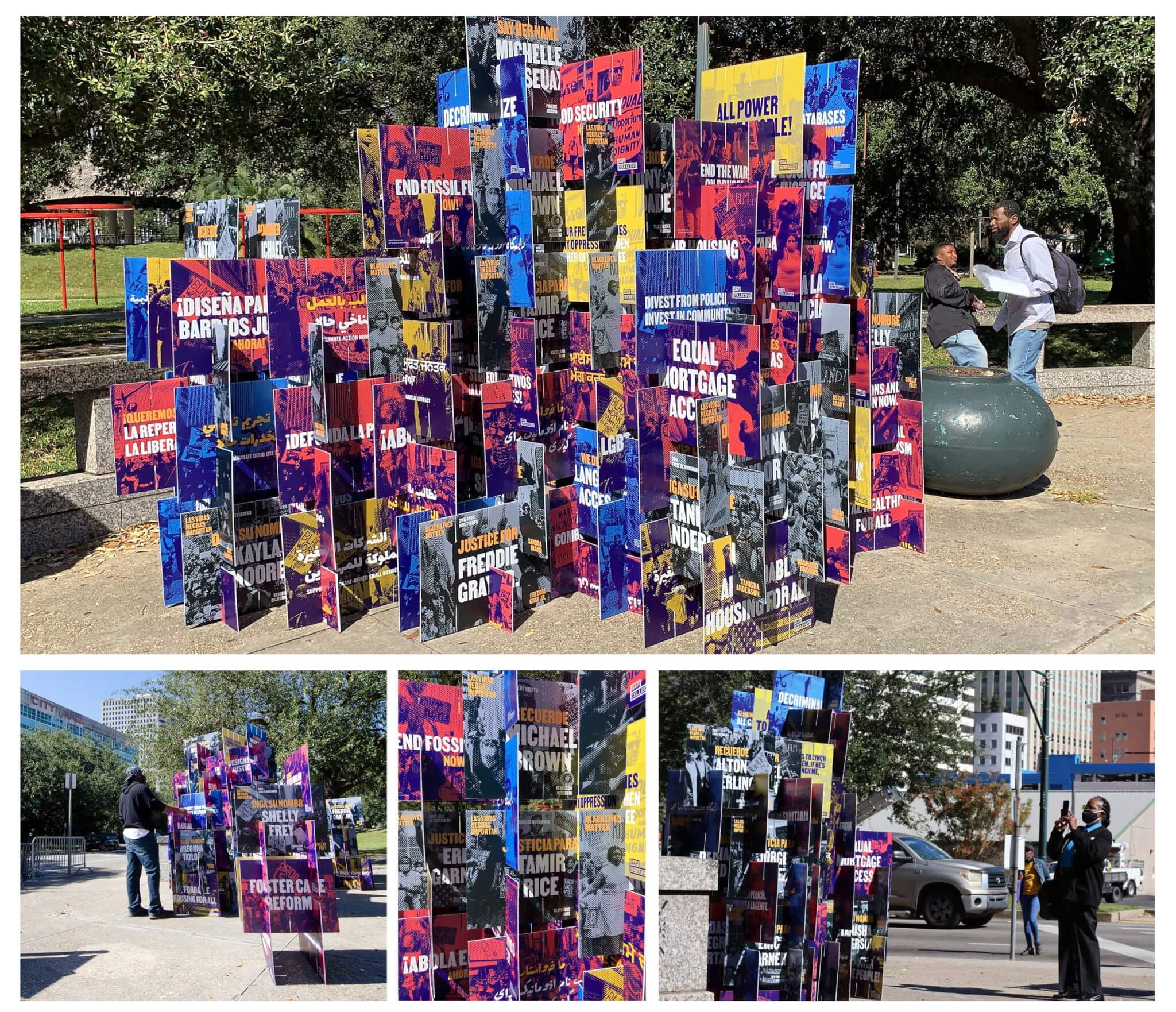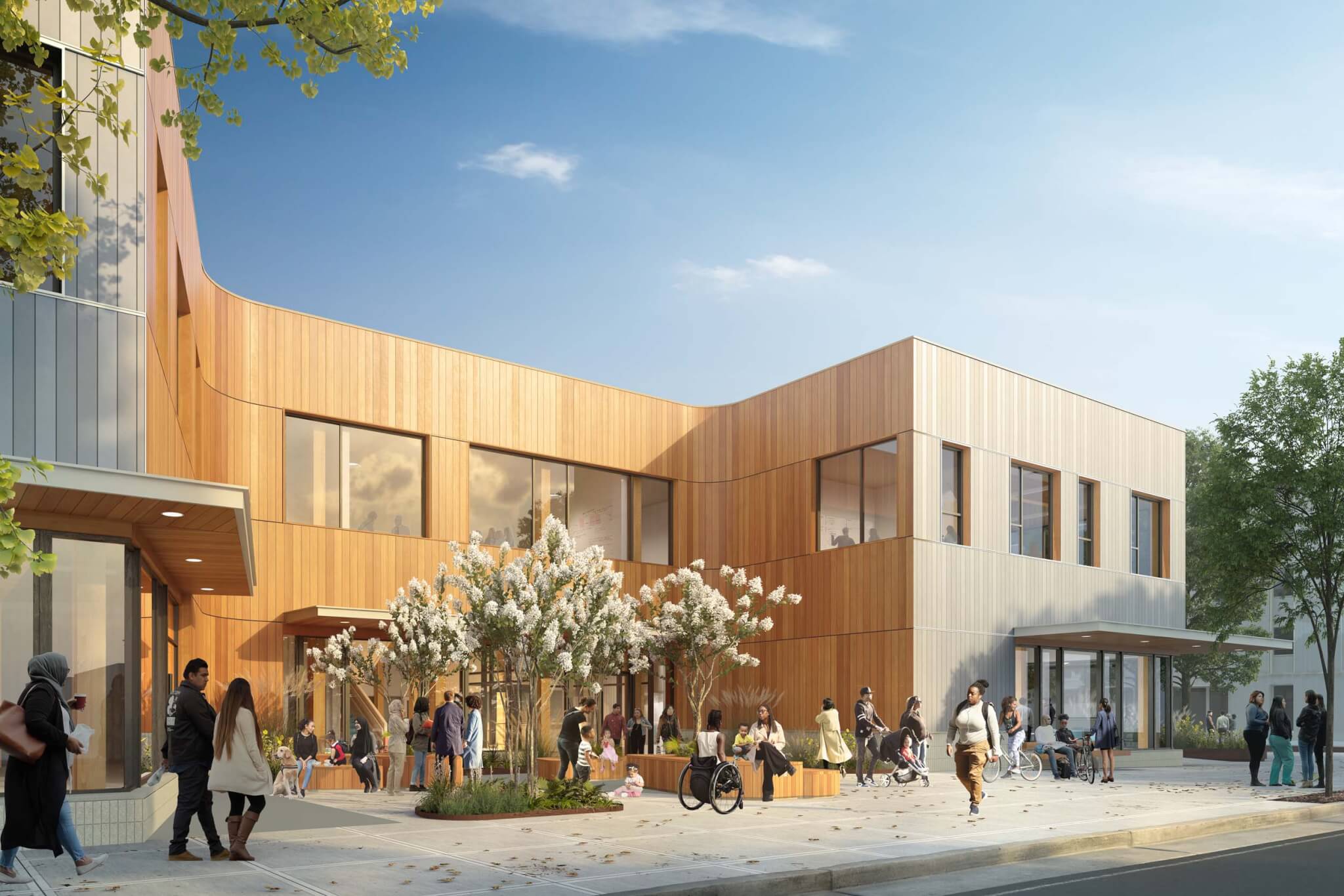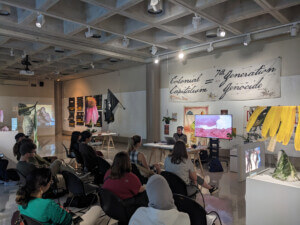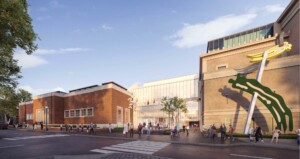If architecture is the act of coordinating inputs and outputs relative to material, space, and time, then much of the work done by Colloqate Design consists in determining what that process looks like relative to typical architectural practice. It might be said, then, that the New Orleans interdisciplinary studio operates at a meta level. Its insistence on first principles— namely, justice, inclusivity, and equity—would support such a view, as would its many connections to academic discourse and novel pedagogical experiments like Dark Matter University.
But this characterization avoids the degree to which Colloqate’s ideals are entangled with its methodology, according to design principal Bryan Lee Jr. “While there are a lot of polemical considerations, there is a practicality to the work that we’re doing that results, for example, in a change in RFP structures,” he told AN. “How do we challenge the way procurement happens? Answering a question like that means making real, material changes that impact the output of the work.”
Lee founded Colloqate in New Orleans in 2017. (The name is a portmanteau of colloquial, as in “the informal language of people and place,” and collocate, as in arranging resources.) He moved to the city in 2011 and soon made his way to the offices of EskewDumezRipple, where he said he “learned how to be an architect.” Active in the National Organization of Minority Architects for more than a decade, he harnessed the theme of its 2015 conference (“Social Justice by Design”) into a workshop called Design as Protest (DAP). The initiative morphed into an independent platform with chapters in dozens of architecture schools around the country. On Donald Trump’s inauguration day, DAP staged multicity workshops that, in addition to their function as symbolic protest, served as a test case for putting multiple, often multigenerational, constituencies into dialogue.
The studio’s emphasis on community outreach is notable for its contrast with the deflationary exercises undertaken by developers and other empowered stakeholders of capital projects looking to mitigate pushback. Colloqate implements a more nuanced approach by retaining a grasp on the tangible. According to Lee, the studio has hired over 80 “organizers”— activists, community stewards, and longtime residents referred to in Colloqate’s literature as the “PhDs on the block”—on a part-time paid basis to consult on numerous projects, including a New Orleans innovation district and a workforce training center in Portland, Oregon. Their responsibilities vary, though they can mean running workshops, helping shape conversations with participants, and collating the data these sessions generate.
“The most critical thing is to have people organizing from the very beginning. We want to get people in predesign and then extend their engagement across the entirety of a project,” Lee said. “The intention is not to bifurcate engagement and design. They are one and the same.”
To avoid having that engagement peter out in a flurry of Post-it notes, Colloqate enshrines localized knowledge and experiences in a repository that would seem antithetical to the purpose: architectural documentation. Data points and ephemera gathered during the workshopping phase are incorporated into a “design justice” document that gets appended to the CD set. By building reflexivity into the actual stuff of design, you are extending the longevity of a community, Lee said. “So when the next set of renovations happens in five, ten, 15 years, and whoever is in charge goes to review the documents, they will get all the technical information as well as annotations, narratives, the rationale for our own design decisions. They will not only get the as-built architecture but also the as-built community.”

Design Justice/ Design as Protest, 2015–
There is a nested quality to Colloqate’s work. Various task-specific initiatives are designed to be mutually reinforcing. For example, Lee describes the DAP workshop series he originally developed for the 2015 National Organization of Minority Architects conference in New Orleans as the “organized action” of the Design Justice Platform, a suite of programs that has also included training seminars and, in 2018, a national summit sponsored by the AIA. These cumulative efforts, Lee told AN, are a framework through which the tenets of a “socially just profession” can be incubated: “Because a lot of the communities that we serve don’t have the financial capacity at any given moment to immediately put a building in the ground, it means we have to do a lot of visioning work with people. It means that our work as designers is about creating expressions of value for people living in a place that is marked for change and showing how they could guide that change themselves.”
Launch School, 2017–
The first phase of this ongoing project will see the renovation of an existing 20,000-square-foot administrative building on a former airfield in Jamaica Bay, Brooklyn, for use by a progressive-leaning K–12 charter school. ARO is heading up the building upgrades, while SCAPE is preparing plans to restore the surrounding landscape. Colloqate, which initially provided design support but was recently promoted to an associate partner, has worked to shape the design desiderata, with an emphasis on racial justice and sustainability. (The school will serve a predominantly Black and Brown community.) Lee commented on the commitment of his collaborators to the process of design justice. “That’s a non-negotiable for our involvement,” he said. “Every firm we work with has to go through multiple rounds of our design justice training. They also need to incorporate what we call the ‘design justice set’ into the CD set, which can be a tool for community engagement down the line.”

Portland Community College Metro Center, 2019–
On its website, Bora Architecture & Interiors touts the high-performance facade of this work-training facility in northeast Portland, which incorporates low-embodied-carbon materials and low-U-factor windows. It also hypes the innovative use of cross-laminated timber in large stretches of the building, now under construction. But the Portland architecture firm gives equal billing to the project’s “trauma-informed design and design justice principles” that reflect Colloqate’s involvement. According to Lee, Bora and other team members attended training sessions on critical race theory ahead of community engagement workshops. When COVID-19 threatened the impact of these proceedings, Colloqate conveyed the team’s progress in a graphic newspaper it mailed to over ten thousand residences in the area. “Our aim,” said Lee, “is to make an architecture or public space that is truly rooted in the communities we’re serving rather than an architecture that is superficial to those communities and expects them to embrace a new format of space. That’s the wrong way ’round.”

Midland Library, 2021–
Design justice sets the top-level agenda for every one of Colloqate’s projects, beginning with the predesign and design development phases. The studio organizes several community engagement sessions to identify “the political, procedural, experiential, and architectural implications” of any given design option, Lee said. From this material, Colloqate compiles a “spatial implications document”—separate from the design justice set—that effectively serves as an index for the implemented scheme, capturing the impressions surrounding its conception and reception as well as its material, ecological, and financial ramifications. In the relevant document for the Midland Library in Portland, you will find feedback from engagement activities with various user sets, captured in upwards of 4,600 comments related to issues ranging from “access and safety” to “identity, culture, and belonging” to “delight.” Through its Community Design Organizer program, Colloqate was able to hire 13 people to facilitate the workshops.
Samuel Medina is a writer and the editor of New York Review of Architecture.











